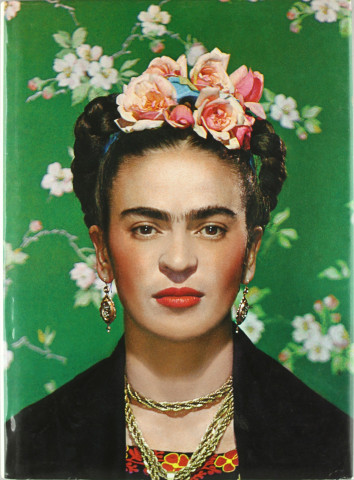
Silversmiths, Women
Frida Kahlo
1907 — 1954
Frida Kahlo was a renowned Mexican artist whose work and life story have captivated audiences worldwide. Known for her deeply personal and surreal self-portraits, Kahlo's art explored themes of identity, pain, and resilience. Beyond her artistic endeavours, Kahlo's connection to Mexican culture and traditions extended into her love for artisanal crafts, particularly silverwork.
Early Life and Artistic Beginnings
Born Magdalena Carmen Frida Kahlo y Calderón in Coyoacán, Mexico City, Kahlo grew up after the Mexican Revolution, profoundly influencing her worldview and artistic identity. As a child, she contracted polio, leaving her with a limp, and later survived a catastrophic bus accident at age 18. The accident caused lifelong pain and health issues but also became a turning point, inspiring her to take up painting during her recovery.
Initially aspiring to study medicine, Kahlo's injuries derailed her plans. Instead, she channelled her energy into art, creating deeply introspective works that merged surrealism with traditional Mexican motifs. Her paintings often featured vivid colours, Indigenous symbols, and personal narratives, cementing her status as an icon of Mexican identity and feminist expression.
Frida and Diego Rivera: A Creative and Turbulent Partnership
1929, Kahlo married muralist Diego Rivera, a leading figure in Mexican modernism. Their relationship was as tempestuous as it was influential. Rivera encouraged Kahlo's artistic pursuits, and together, they cultivated a shared passion for Mexican culture and folk art. This passion extended to their adornments, including jewelry.
Kahlo and Rivera championed the revival of traditional Mexican crafts, particularly when the country was reasserting its cultural heritage. Kahlo's distinctive style often included indigenous clothing and elaborate jewelry, much of which featured silver.
Frida's Connection to Silver
Silver held a special place in Mexican artisan traditions, and Kahlo was deeply drawn to its beauty and cultural significance. Mexico was one of the world's leading producers of silver, and during Kahlo's lifetime, the country experienced a resurgence in artisanal silverwork. Taxco, a city known for its silver mines and jewelry, became a hub for innovative designs blending indigenous motifs with modern styles.
Kahlo frequently wore silver jewelry, including chunky necklaces, bracelets, and earrings adorned with pre-Columbian designs. These pieces were not merely accessories but extensions of her identity, reflecting her pride in Mexico's heritage and her commitment to integrating traditional elements into modern life. Her jewelry also served as a personal statement of strength and defiance, echoing her resilience in the face of physical and emotional pain.
Legacy
Frida Kahlo's life and art have left an indelible mark on the world. Her exploration of identity, celebrating Mexican culture, and embracing artisanal crafts, including silver, continue to inspire. Today, her iconic image—often adorned with her signature silver jewelry—remains a symbol of individuality, creativity, and cultural pride.
Kahlo's connection to silver reflects her larger philosophy of life: an appreciation for beauty, resilience, and the enduring power of art and tradition to tell a deeply personal yet universal story.
Last Updated on: 2025-01-10
